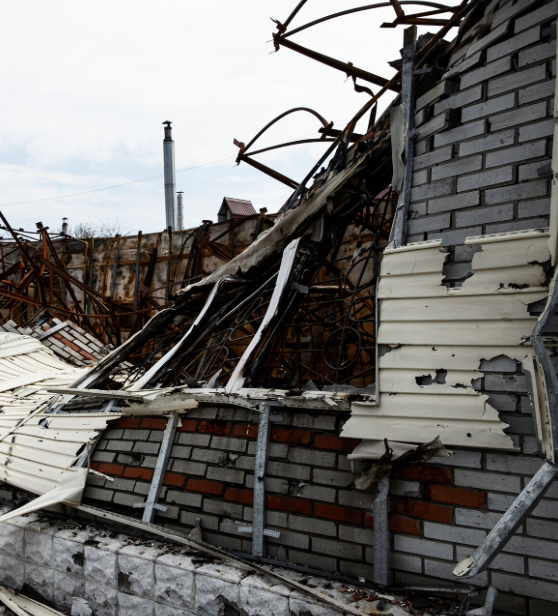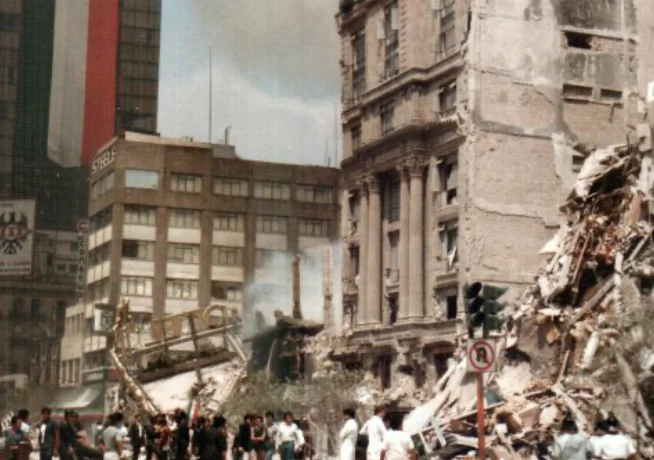The earthquake of September 19, 1985, which devastated Mexico City and left more than 10,000 people dead, was not only a natural disaster. It also exposed a deep crisis of social justice, corruption, and human rights violations that continues to resonate forty years later, in 2025.

When the Ground Shook, the Law Stood Still
Collapsed buildings —many of them recently constructed— revealed a network of corruption in the construction sector and negligence by urban authorities.
The State’s responsibility dissolved among bureaucracy, omissions, and privilege.
The judicial system failed to serve victims seeking justice and compensation. Most lawsuits were buried in procedural labyrinths, leaving countless families without answers or legal recourse.
Corruption in Construction: A Preventable Tragedy
Corruption in construction was a determining factor behind the scale of the disaster. Fraudulent permits, substandard materials, and missing inspections contributed to hundreds of collapses.
Today, institutions such as the Ministry of Public Administration (Secretaría de la Función Pública - SFP) oversee public transparency mechanisms to prevent such negligence.
The Awakening of Civil Society

What began as a humanitarian reaction —neighbors clearing rubble by hand— soon evolved into a political and legal movement.
For the first time in modern Mexico, citizens organized independently from the government.
Social movements born after the earthquake marked a turning point. Solidarity transformed into legal advocacy. Citizens demanded legal reforms, transparency, and public accountability.
Networks such as the Red TDT - National Network of Human Rights Organizations have carried forward this legacy, continuing to defend victims’ rights in the present day.
Impact on Human Rights
The 1985 earthquake did not only destroy infrastructure; it also shattered institutional trust. The lack of reparations revealed systemic human rights violations — a collapsed justice system, State negligence, and the inability to protect victims.
A System in Debt to the Victims
Thousands of families were left homeless and unprotected. Social justice became a national demand. This vacuum led to the creation of early NGOs fighting for the right to housing, supported by initiatives from the National Human Rights Commission (CNDH), which continues to document neglect and State failures in disaster contexts.
State Responsibility and Jurisprudence
The legal debates that followed the disaster transformed Mexico’s understanding of State responsibility.
Citizens began filing amparos (constitutional injunctions) to compel the government to provide safe housing and reparations.
Cases and Precedents
Judicial decisions from the 1990s, documented by the Supreme Court of Justice of the Nation (SCJN), set precedents recognizing the State’s obligation to supervise infrastructure and sanction negligence. These rulings remain a legal reference in discussions about State accountability.
Long-Term Legal Consequences

From the 1985 quake emerged:
- The rise of NGOs advocating for the right to adequate housing.
- The first amparos demanding enforceable obligations from the State.
- Legal debates on civil and criminal liability of negligent officials.
These developments reshaped the Mexican legal landscape and strengthened the idea that justice must serve victims, not abandon them.Organizations like the Habitat International Coalition - Latin America Office (HIC-AL) remain committed to securing safe housing policies across the region.
Post-1985 Legislative Reforms
The legal reforms that followed the disaster established new frameworks for construction, transparency, and victims’ rights:
- Amendments to the Civil and Criminal Codes, accessible via the Mexican Senate’s legal database.
- Integration of human rights protection principles into the Political Constitution of the United Mexican States.
- Creation of the General Law for Victims, published in the Official Gazette of the Federation (DOF), which recognizes State responsibility and guarantees full reparation.
These legal reforms solidified the relationship between law and civil society, providing tools to prevent future injustices.
Comparisons with Other Crises
Later disasters —such as the earthquakes of 2017— demonstrated that the lessons from 1985 were not fully implemented.Despite new institutions and laws, patterns of negligence and corruption reappeared.Reports by the National Center for Disaster Prevention (CENAPRED) emphasize the need for stronger sanctions against companies and public officials responsible for omissions.
Victim Stories and Testimonies
Voices That Never Fell Silent
Testimonies collected by NGOs and media outlets narrate the victims’ legal struggles: mothers suing the State for the loss of their children, workers denouncing irregular construction, and communities filing collective lawsuits demanding State accountability.
The Role of Media and NGOs
The media played a key role in exposing corruption in construction and promoting legal action.
Meanwhile, NGOs became vital agents of change, enhancing access to justice and defending human rights.
Independent outlets such as Animal Político continue to investigate issues of impunity and delayed justice decades later.
Lessons for Justice in 2025
The 1985 earthquake remains a standing legal warning. It shows that legal systems must act when institutions fail.
In times of crisis, justice cannot wait.Every fallen building symbolized not just a structural collapse, but a collapse of the law.
To remember 1985 is not only to honor the victims but to reaffirm the State’s responsibility, the demand for social justice, and the pursuit of meaningful legal reforms.
Conclusion
The legal legacy of the 1985 earthquake transcends generations. It was a watershed moment for human rights, State responsibility, and social movements.
The lessons of 1985 strengthened Mexico’s commitment to transparency, justice, and victim protection — paving the way for a more vigilant civil society and a more humane legal system.
